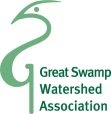 | |||
| The panoramic landscape at the Great Swamp National Wildlife Refuge. Credit: A. Kaufman, 2011 |
The 7,768-acre Great Swamp National Wildlife Refuge was set aside in 1960 primarily as a sanctuary for migratory birds. However, the Refuge is much more than that. It contains forested wetlands, emergent wetlands, and various successional stages of upland vegetation, provide habitats for a diversity of wildlife species.
What’s the Plan?
In fact, at this “draft” stage there are four alternative plans proposed, each with a different emphasis. The merits of each alternative plan will be outlined and discussed at two public meetings scheduled to take place in June. All members of the public are invited and encouraged to provide comments and suggestions at one of the following meetings:
June 11, 2014, 10 a.m. to 12:00 noonEach Alternative Plan Has A Different Focus
Chatham Township Municipal Building
58 Meyersville Road
Chatham, New Jersey 07928
Click here for a map and directions.
June 12, 2014, 6:30 p.m. to 8:30 p.m.
Long Hill Township Municipal Building
915 Valley Road
Gillette, New Jersey 07933
Click here for a map and directions.
Alternative Plan A --- Continue Current Management Priorities and Activities
(No changes required --- Plan A serves as a baseline for comparing Alternatives B, C, and D)
- Habitat Management: Maintain a diversity of habitats, including wetlands, about 500 acres of impoundments, 700 acres of grasslands and scrub-shrub, and forest.
- Visitor Services: Continue to support environmental education, interpretation and wildlife observation, hunting and photography. Maintain the annual five-day deer hunting season, 1.5 miles of boardwalk with three observation blinds, and wilderness trails. Also offer appropriate, compatible non-wildlife-dependent uses including horseback riding, jogging, cross-country skiing, snowshoeing, virtual geocaching, and dog walking.
- Habitat Management: Maintain a diversity of forest, non-forested, open water, grassland, and scrub-shrub habitats. Proposed that 161 acres be added to the wilderness area. Reconfigure and maintain habitats to create fewer, larger (greater than 50 acres) continuous patches to promote wildlife use, increase connectivity, decrease fragmentation, increase maintenance efficiency, and reduce associated costs. Emphasize habitat for priority bird species and Federal trust species, including the bog turtle and Indiana bat.
- Visitor Services: Expand opportunities to reach nearby urban and suburban populations. Expand the hunt program by permitting archery for deer and opening the Refuge to turkey hunting. Improve wildlife viewing and photography opportunities by creating trails, providing more parking, and constructing observation towers. Expand Visitor Center hours. Increase the number of environmental education and interpretation programs.
- Habitat Management: Allow natural succession or regeneration to occur to maximum extent practical, by reducing active management of impoundments, grassland/brush land and by allowing natural succession to forest. In many cases, the areas will become forested swamp. Maintain large patches of consolidated grasslands and managed brush land along Pleasant Plains Road. Continue active management in areas known to support priority refuge species. Actively work with regional partners to address climate change, habitat loss, and water and air quality impacts.
- Visitor Services: Public use opportunities would be the same as under Alternative A, except add elimination of less-used, dead-end trails in the wilderness area.
- Habitat Management: Would be the same as under Alternative A, except:
- emphasis on managing for habitats open to the public.
- maintain open water habitat within impoundments.
- aggressively expand partnership for conservation initiatives.
- Visitor Services: Allow fishing in select areas of the Refuge. Expand hunting as described under Alternative B. Provide a greater variety of wildlife-dependent public use opportunities. (For example, open the Refuge to fishing and expand opportunities for biking, canoeing and kayaking.) Increase outreach and publicity to promote the Refuge. Expand infrastructure, including new trails, observation towers, parking lots, and new signage. Collaborate with adjacent landowners to create or link additional trails. Open most management roads to pedestrian traffic.
Submitting Written Comments
The Great Swamp Watershed Association encourages all of its members to read the draft CCP/EA for the Great Swamp National Wildlife Refuge and submit written comments to the USFWS. Please use the following contact information when submitting your materials by post or fax:
Bill PerryTo submit your comments electronically, please send an email with Great Swamp NWR in the subject line to northeastplanning@fws.gov.
Refuge Planner
Northeast Regional Office
300 Westgate Center Drive
Hadley, MA 01035
tel. (413) 253-8688
fax. (413) 253-8468
----
Editor's note: Per a request from the U.S. Fish & Wildlife Service, two corrections were made to the original article on 6/9/2014. The sentence "Proposed that 168 acres be added to the wilderness area," under the Alternative B section was changed to read, "Proposed that 161 acres be added to the wilderness area." The heading "Would be the same as under Alternative B, except..." under the Alternative D section was changed to read, "Would be the same as under Alternative A, except..."











